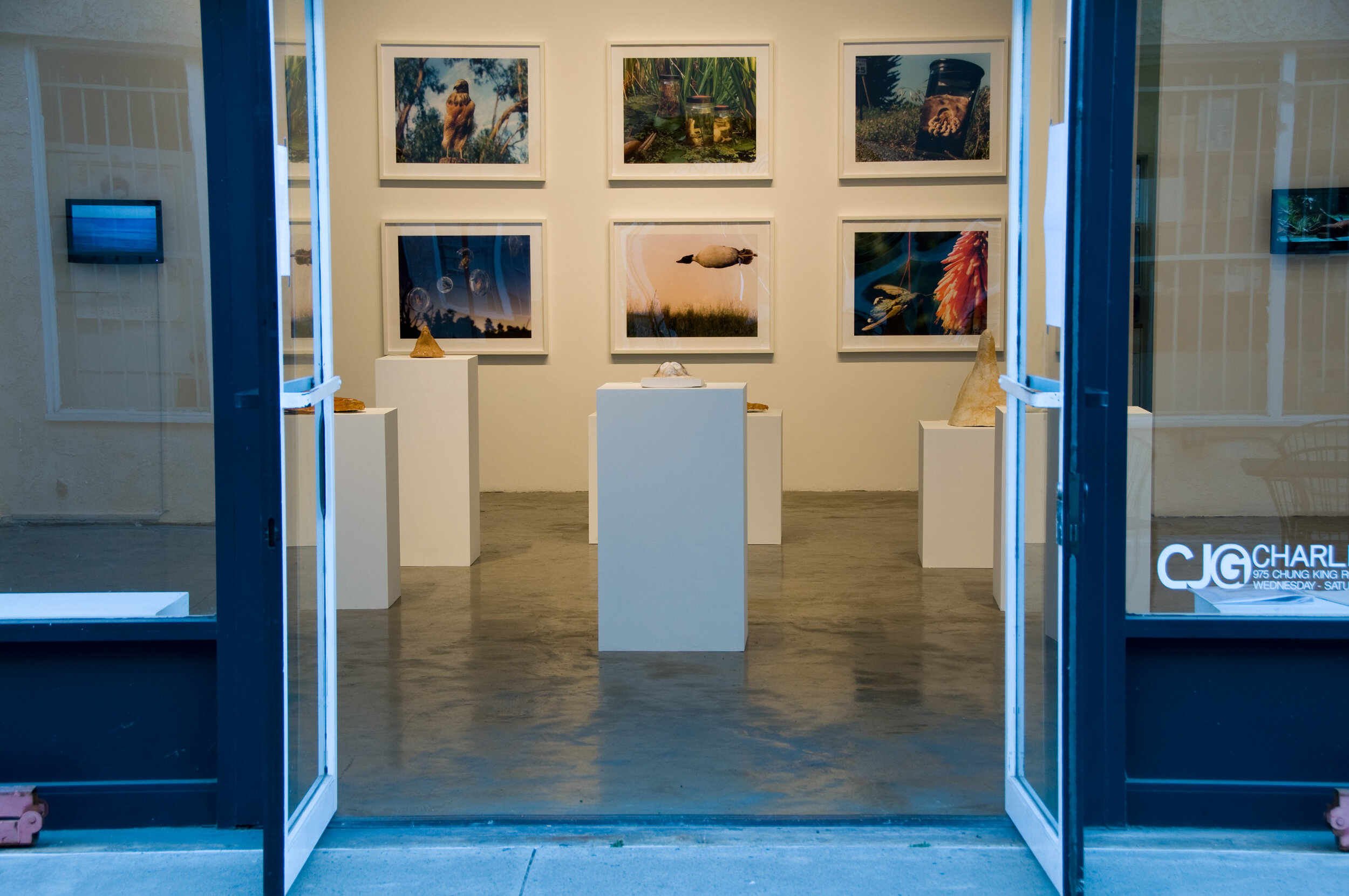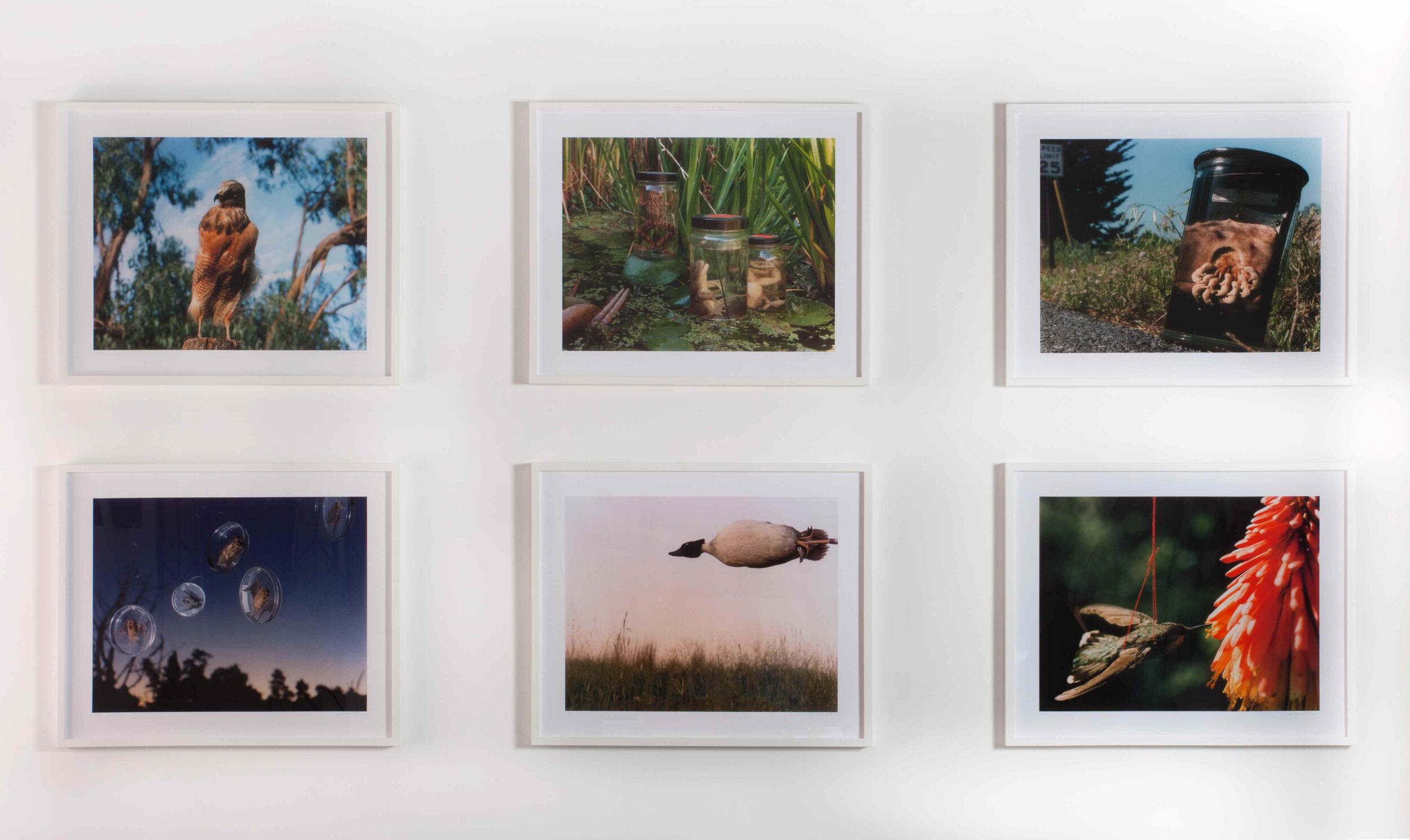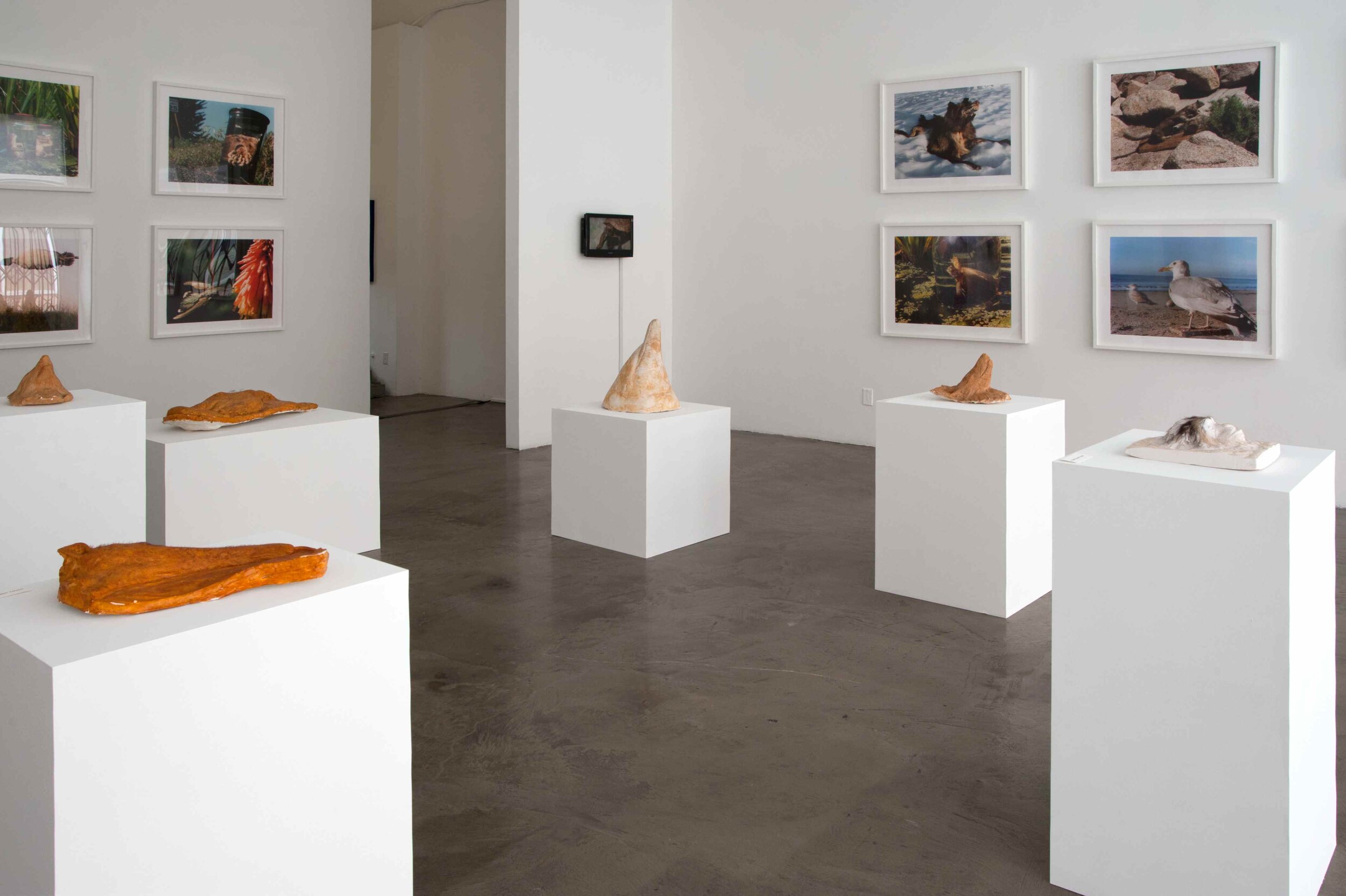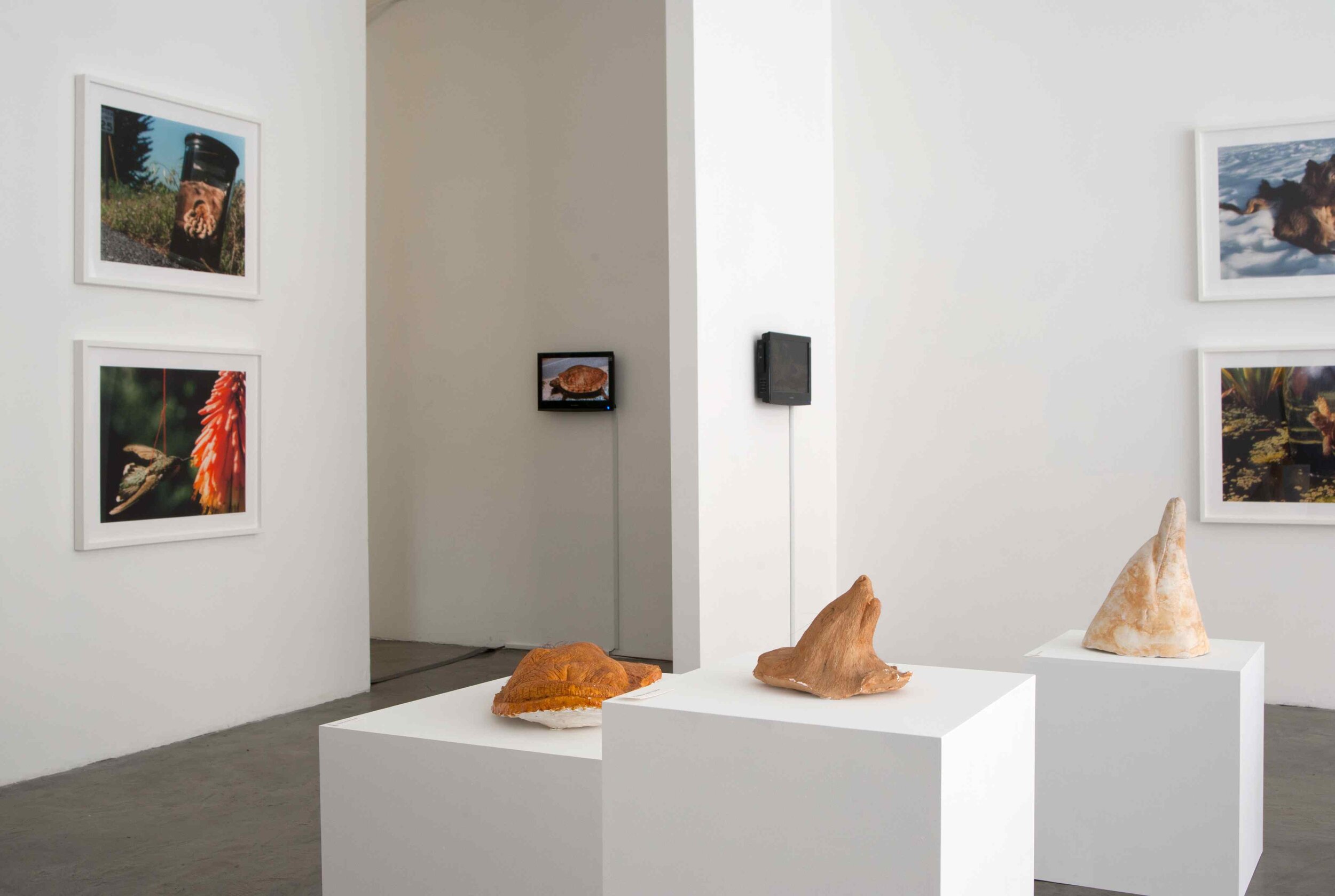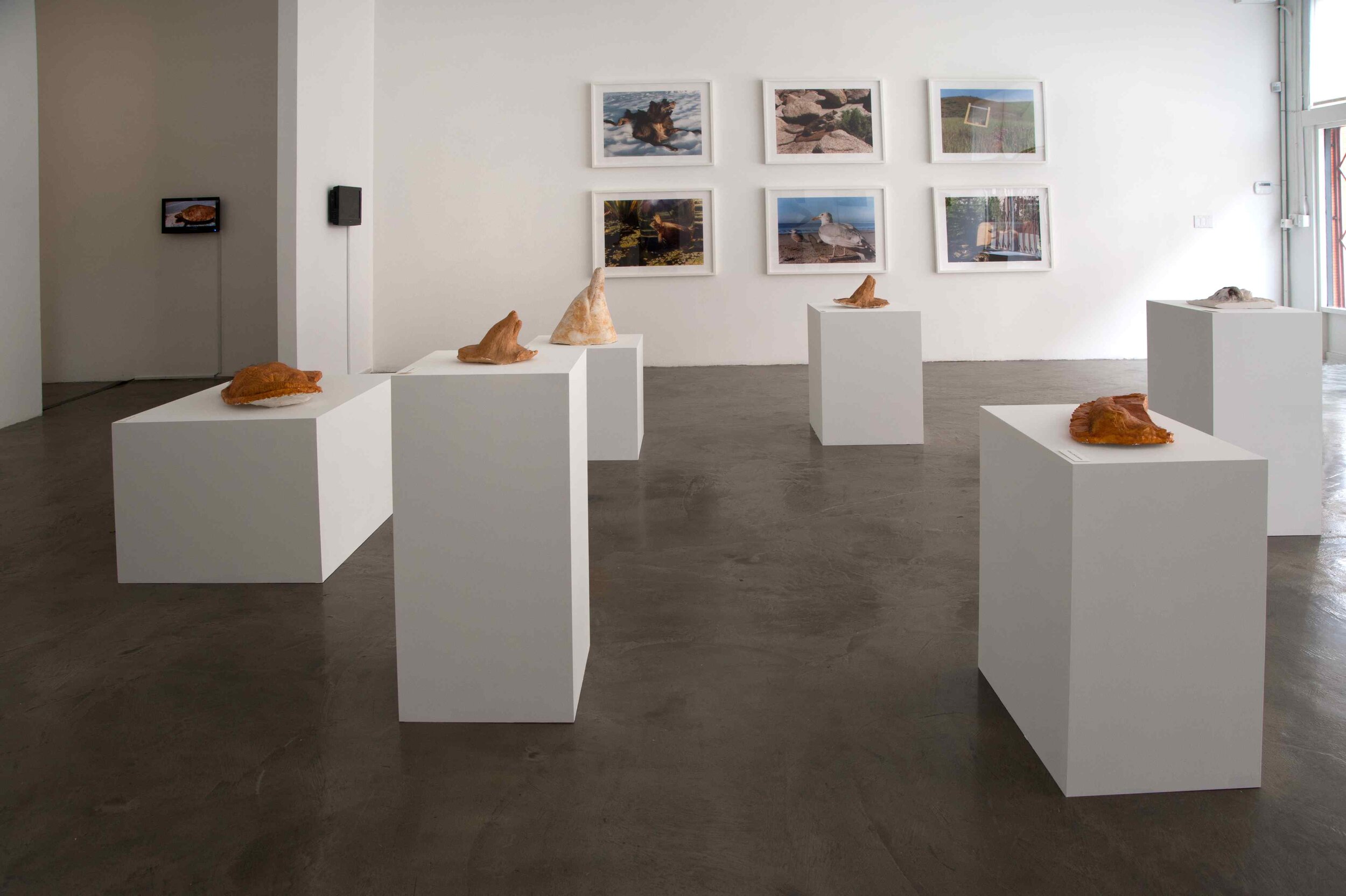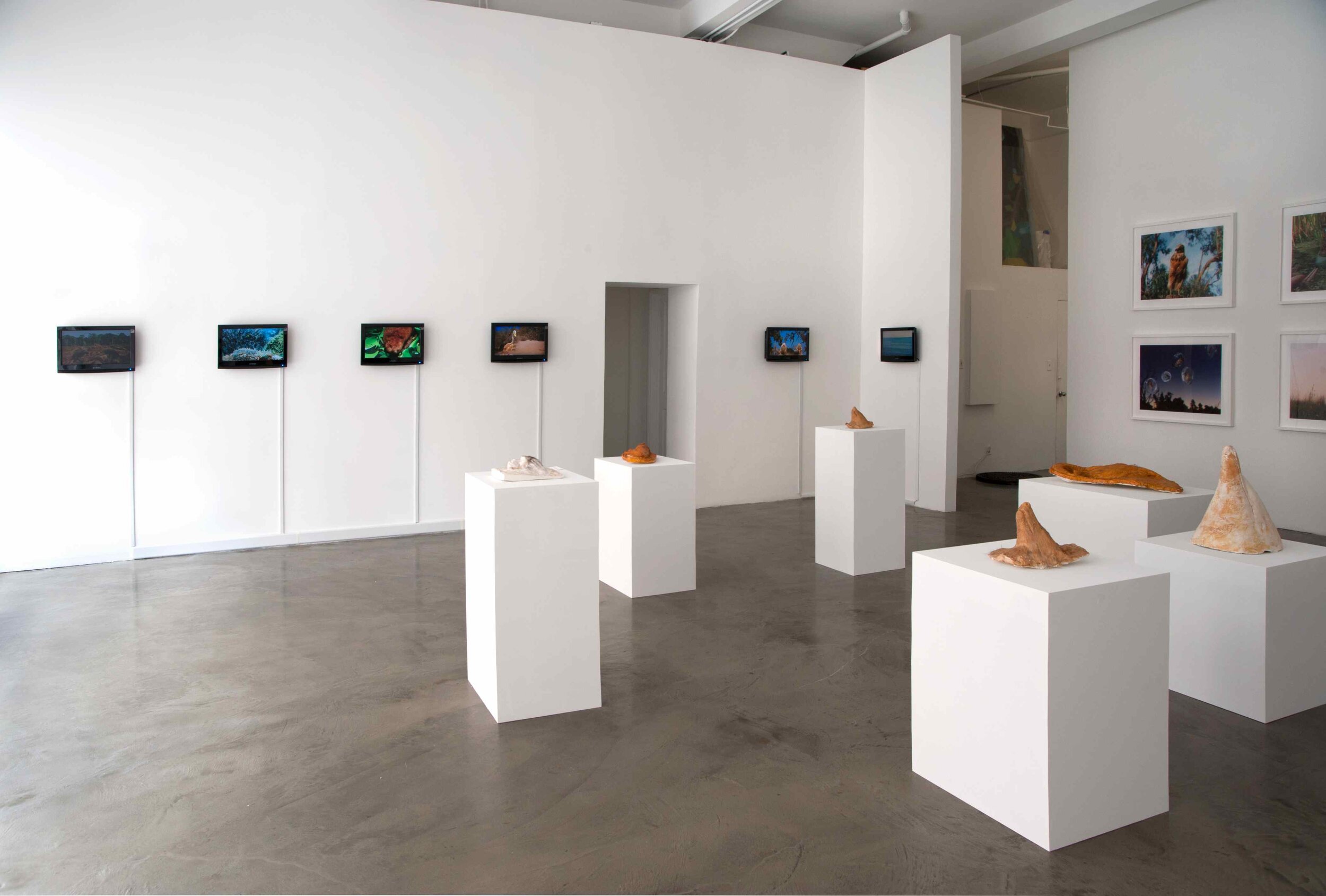Animal Stories
The exhibition brings together three bodies of work which use dead animals to look at deadly threats to living animals from the actions – or inactions – of humans. The dead animals are taxidermied or jarred specimens and animal death masks originally from university teaching collections. The deadly threats encompass habitat destruction from deforestation, agricultural encroachment, and exotic invasive species; changes in ocean chemistry and sea level as climate change progresses; pollution both chemical and physical; deliberate killing of species labeled pests; overharvesting both legal and illegal, even accidents.
In the videos that comprise A Turtle and Two Squirrels Walk Into a Bar… (2011), taxidermied animals comment on or question changes that have occurred in their lives. Such events as deforestation or loss of fresh water cause consternation or bewilderment. A sea turtle swims laden with marine debris. A seagull searches for the inundated shoreline where it used to nest. The predicaments they experience are serious. Yet to see the clunky “animation,” to hear the specimens “speak” is to be amused. Humor and pathos form a dynamic equilibrium in these works.
The photographs of The Calendar Pictures (1990/2011) mock the conventional wildlife calendar that soothes us into thinking all is well with happy animals in undisturbed nature. Here also, dilapidated specimens (in some cases the same as those in the videos) are the subjects. But these animals were actually transported to their natural habitats on field trips in acts of symbolic reparation. There they were helped to “live again” and photographed in the manner of classical wildlife pictures. We see the familiar scenes and settings but they are unexpectedly populated with dead subjects. The ridiculous ways in which the dead animals have “been brought to life” are uncomfortably hilarious.
By contrast, the found animal death masks of Burning Down the House (2010) convey no shred of humor. They are solemn, dignified, the essence of gravitas, vastly silent and weighted. Named for perils facing their wild populations, their meaning expands to make them symbols of all creatures who stand to meet their demise because of human activities.
The animals of the death masks differ from those in the videos and photographs in another way. Those of the death masks retain their animalness, their “otherness” undiluted by anthropomorphism. The creatures are mysterious and fascinating. In the photographs and even more so the videos, the specimens are deliberately anthropomorphized, given a mantle of human-like personality in order to make their situations more familiar and meaningful. Watching the videos we realize that events and issues we hear about in human terms affect creatures that have no idea wtf and no way to change things.
Our own fate and the fate of other species are intrinsically intertwined. Organisms large and small make up the biological part of the ecosystems in which our lives are embedded. No matter how isolated in cities we may feel ourselves to be, our mortal bodies still need clean water, breathable air, and regular feeding. These things are provided by functioning ecosystems, and functioning ecosystems contain many species. Thus, as go the elephants, gibbons, and hummingbirds, ultimately, so go the humans.
Selter received her MFA in Photography from the School of Art and Design, San Jose State University in 2002. She also holds degrees in botany and biology. Her work has been exhibited at Gallery 16, San Francisco Art Commission Gallery, SF Camerawork in San Francisco, SFMOMA, and the San Jose Museum of Art, as well as at Harvard University, and at CEPA Gallery in Buffalo, NY. She has received a SECA award and the Phelan award in photography.


